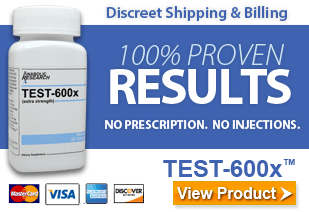Low Testosterona
Low testosterona is a condition that affects millions of men in the U.S. alone; estimates have it around five to seven million; add in the twenty to twenty-five million who suffer from Andropause, total androgen suppression, and low testosterona is a massive problem. Those are some pretty staggering numbers to say the least, but what’s more staggering is the vast majority of those who suffer do little to nothing about it. It truly is a shame, as low testosterona is a condition that is easy to remedy, but when ignored it is a condition that will severely diminish your quality of life. Of course, before you treat it, you need to know the signs, and if the signs point to yes you need to know which steps to take; luckily for you, you’re about to get all the answers.

Low Testosterona Symptoms:
Low testosterona is a condition that generally builds slowly over time, and by the time many men realize they suffer it’s a condition that has been a part of their life for a very long time. In many ways, this isn’t all that surprising; as we age our testosterona levels gradually fall, and as it is so gradual it’s easy to become accustomed. Of course, just because you become accustomed doesn’t mean you should; you can become accustomed with many things in life that are detrimental to your well-being. In any case, the rate of decline will vary from man to man, but it will occur nonetheless. Most men will notice sharp declines in their 40’s, but far more than is often assumed begin to see their levels dramatically drop in their 30’s. As testosterona levels fall, several things may occur that diminish your quality of life; these are the symptoms of low testosterona. You may not display each and every symptom; in-fact, you’ll probably only display a few in the early stages. The symptoms of low testosterona include:
- Loss of Libido
- Erectile Dysfunction
- Loss of Strength (despite diet & exercise)
- Loss of Muscle Mass (despite diet & exercise)
- Increased Body-Fat (despite diet & exercise)
- Depression
- Loss of Energy
- Insomnia
- Lack of Focus or Clarity of Thought
- Weakened Immune System
As you can easily see, these are some very bothersome symptoms, and they can affect each and every area of our life. Of course, they’re not life-threatening, but what many fail to realize is if left ignored they can open the door to many far more serious conditions; some of which are life-threatening indeed. In any case, however far your low testosterona goes there’s no reason to suffer, and if you display any of the symptoms above you are encouraged to take the following action.
Treating Low Testosterona:
If you display any of the symptoms of low testosterona, the first step is to schedule a visit to the doctor. In most case, most physicians will require you to display at least two symptoms on the list to consider low testosterona treatment; generally one of the sexually related plus another. Of course, this is a strong indicator, but the only way to truly discover a low testosterona condition is through blood work and this will be performed. Through blood work your testosterona levels will be measured, and in the U.S., any total level below 300ng/dl is generally considered low, and warrants therapy. If you meet this end, your attending physician will prescribe some type of testosterona therapy of which there are many, but only one is assured.
When you receive treatment for a low testosterona condition, some physicians will try to spur LH and FSH production thereby stimulating the production of natural testosterona. This can be a suitable method, and often Selective Estrogen Receptor Modulators (SERM’s) and Aromatase Inhibitors (AI’s) are used for this purpose. Both SERM’s and AI’s stimulate production by causing the release of LH and FSH, but in many cases, it’s not strong enough, and if LH and FSH are not your problem then it certainly won’t remedy the problem. Then there’s the use of Human Chorionic Gonadotropin (hCG), a powerful peptide hormone that mimics the release of LH. This has become a much more popular treatment method in recent years, but again, it is not the best option.
The best way to treat your low testosterona condition is through direct testosterona therapy, and even here we have options. To treat low testosterona in this manner, you’re going to need anabolic steroids; specifically the primary testosterona steroid. This can be found in transdermal gels and patches, implant pellets and of course, in a simple and pure injectable form. All four have the ability to get the job done with a higher level of efficiency than SERM’s, AI’s or hCG, but injectable testosterona takes the cake as it is 100% effective each and every time. In any case, with therapy you can be your old self in no time at all; you’ll feel better, look better and simply enjoy a higher quality of life, and there’s no man on earth who doesn’t want that.

